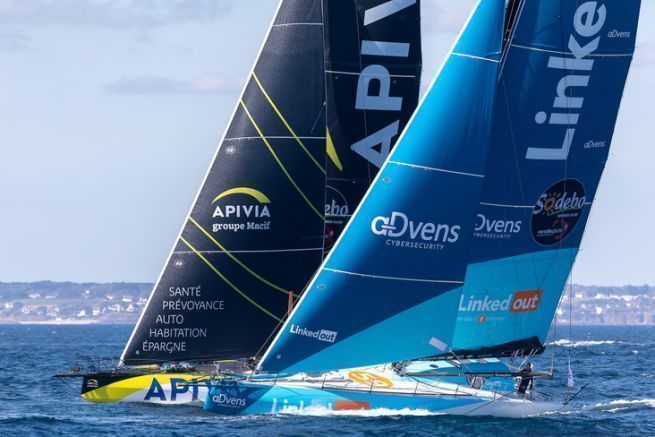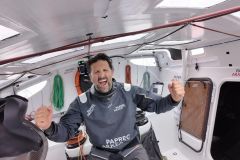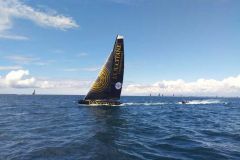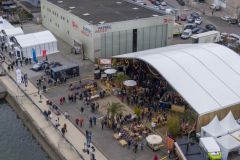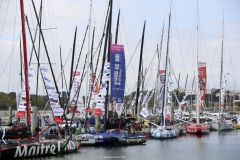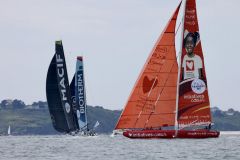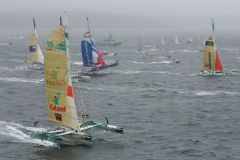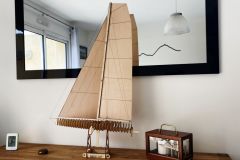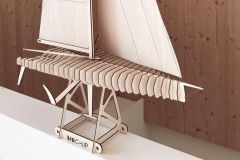As in all ocean racing classes, a set of rules (the class rules) determines the prohibitions, limitations or obligations that IMOCA yachts participating in ocean races must respect. The IMOCA class rules are open: everything that is not prohibited, limited or imposed is allowed. Some elements are monotype euros, i.e. the same for all euros and chosen by the class, others are left to the choice of the skipper and/or his team.
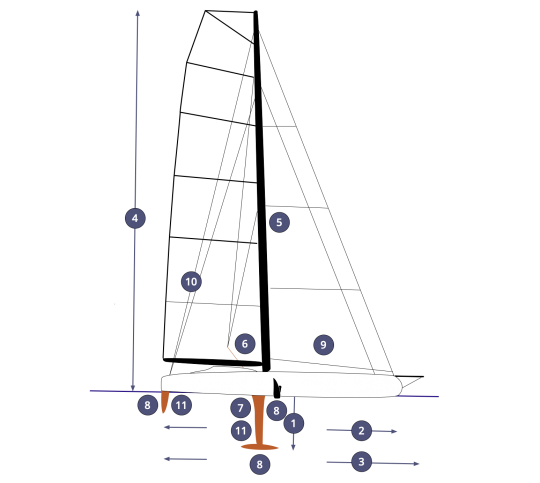
1 euros Maximum draft : 4,50 m
2 - Maximum hull length: 60 feet or 18.28 m
The hull length is calculated from the rearmost point of the hull with the hull appendages to the foremost point. The balcony, the stanchion, the antenna gantry and antennas, the wind generator, the photovoltaic panels and the hydro generator are not taken into account in the hull length. It must be a minimum of 17.983 m and a maximum of 18.288 m (60 feet).
3 euros Maximum length with bowsprit: 66 feet, or 20.12 m
The length of the hull is taken into account here, to which the forward and aft overhangs of the spars are added. It must be a maximum of 20.117 m. When the rake (longitudinal inclination of the mast) is between 4 and 6°, a maximum of 25 mm of boom overhang is allowed.
4 euros Maximum air draft : 29 m
The maximum air draft is 29 m when the boat is at rest, with zero list and in light configuration.
5 euros Wing mast (quest between 2 and 4°)
The IMOCA masts are standardized and manufactured by Lorima. The boom is also standardized. The mast rake (longitudinal angle in relation to the vertical) is not adjustable while sailing. It is measured at rest, at zero heel and in light configuration. It must be between 2 and 6 degrees.
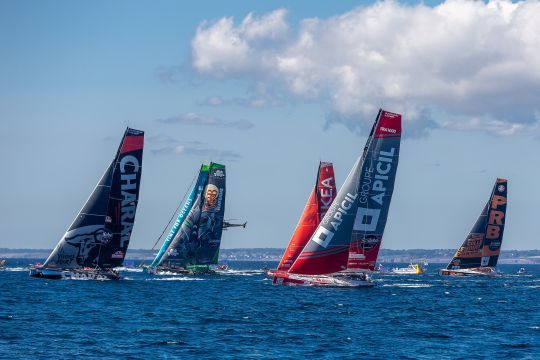
6 euros Outriggers monotypes
The masts are equipped with outriggers, carbon tubes at deck level, which receive the shrouds, replacing the traditional spreaders. These parts are monotypes.
7 euros One-design keel sail in stainless steel
The keel sail and its control system are standardized. They must not be modified and only the fairing can be modified locally at the bulb junction and/or near the hull.
8 euros Two rudders and one keel are mandatory. Five appendages maximum (keel, 2 rudders, 2 foils or daggerboards).
9 euros Eight, maximum number of sails on board
The maximum number of sails on board is 8 . They must all have a certification mark specified by the Chief Scaler. Carbon fiber is not permitted in sails.
10 euros Marking space reserved for race organization
11 euros Color coded for keel and rudders
These appendages must be painted with a flashy color (fluorescent yellow, orange, pink, etc.) in order to be visible in case of a rollover.
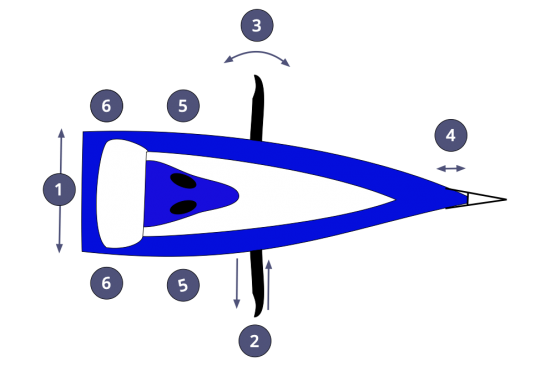
1 euro Maximum width : 5,85 m
2 euros Retractable foils
The number of foils must be 2 and composed of a single continuous surface. The foil must respect the following maximum limitations:
- A static moment of 8 m 3
- A total developed surface of 7,70 m 2
It must be able to move in and out of the hull and must use a single degree of freedom for this movement.
3 euros Rake of foils (+ or euros 5°)
We are talking about the rotation of the foil which must be limited to an angle of 5°
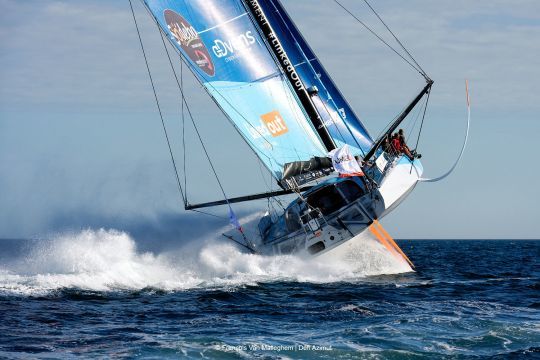
Boat race number
The hull number is assigned by the IMOCA Chief Measurer and must be molded or engraved on the transom of the boat.
4 euros Max width (1,12 m) in the 1 er m
On the 1 er m from the hull, the width must not exceed 1.12 m. It is to meet this rule that we do not find true scows in the IMOCA class, but rather boats with a rounded bow, like the current Bureau Vallée 3 (ex-Occitane en Provence).
5 euros Side ballasts: approx. 1,000 kg
6 euros Rear ballasts: 350 kg approx
A ballast tank is a tank filled exclusively with sea water. Their number is limited to a maximum of 4. They must be positioned symmetrically inside the hull.
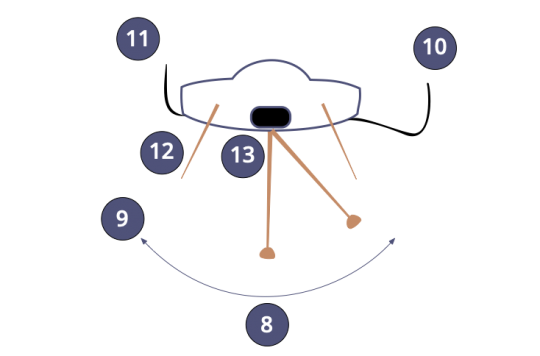
8 euros Keel at 0
The keel of an IMOCA must not be equipped with any appendages or other equipment or systems that could produce lift and/or affect righting moment, drift, stability and elevation.
9 euros Keel tilted at 38° max
The canting keel was introduced in 1998 and is designed to increase the return torque. The maximum keel angle allowed around its rotation axis is 38° on each edge. Sealed mechanical stops must be installed on each edge to limit the mobility of the keel.
10 euros Foils out
The foils allow the boat to be supported and reduce drag problems. Boats equipped with foils are much faster than daggerboard boats.
11 euros Foils retracted
No point on each foil shall exceed 5.750 m on either side of the plane of symmetry of the hull when both foils are retracted systematically.
12 euros Plans for rudder holders prohibited
The rudders must not be equipped with load-bearing surfaces, which would allow the boat to lift off the water even more.
13 euros One-design keel canting system
